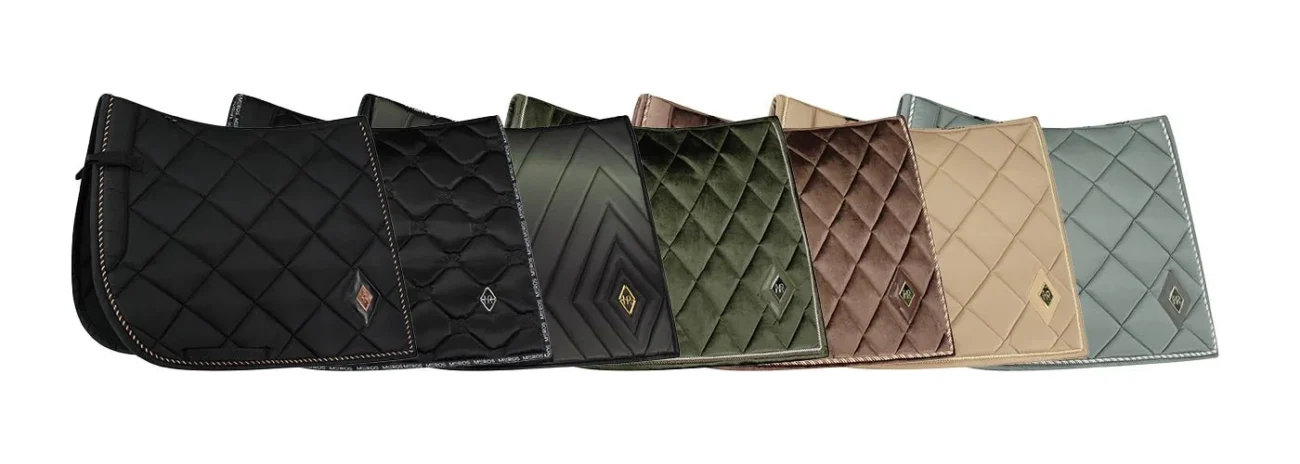When it comes to dressage, precision and comfort are key—not only for the rider but for the horse too. The right dressage saddle pad can significantly improve your performance and your horse’s comfort. Choosing the right one involves understanding the key features that make a high-quality saddle pad stand out from the rest. Whether you’re preparing for a competition or refining your skills, this guide will help you pick the best dressage saddle pad for your needs.
Contents
What Makes a Dressage Saddle Pad Different?
Dressage saddle pads are specifically designed for the discipline of dressage, where posture, balance, and comfort are essential. These pads offer more surface area than regular saddle pads and are often designed with a larger shape to fit the dressage saddle. Their purpose is not only to protect your horse’s back but also to provide the rider with more stability and comfort.
Key Features of a High-Quality Dressage Saddle Pad
1. Fit and Coverage
One of the most crucial features to consider is the fit. A high-quality dressage saddle pad should fit both the saddle and your horse’s back properly. It should provide enough coverage to ensure comfort during long rides or performances. The pad should not be too large or small, as that could interfere with the saddle’s fit. For optimum results, a custom-fitted dressage saddle pad is often the best choice.
2. Breathability and Moisture Wicking
During a dressage performance or training session, your horse is bound to sweat. A quality saddle pad will have excellent moisture-wicking capabilities to keep your horse cool and dry. Breathability is essential, especially in warmer conditions, as it helps regulate temperature and prevents overheating. Look for materials like cotton or wool that allow for maximum airflow and moisture absorption.
3. Padding and Cushioning
A good saddle pad should have sufficient padding to protect your horse’s back from pressure and friction. For dressage riders, a pad that provides just the right amount of cushion without being too thick or bulky is ideal. Too much padding can raise the saddle too high, while insufficient padding could cause discomfort for your horse.
4. Durability and Quality Materials
Durability is a significant factor when choosing a dressage saddle pad. High-quality materials such as cotton, fleece, or wool are often preferred. Wool, in particular, is excellent at wicking away moisture and providing long-term comfort. Look for saddle pads that are well-constructed and made to last, as these will offer better performance in the long run. A durable saddle pad can withstand frequent use and washing, maintaining its effectiveness over time.
5. Shape and Design
The shape of the saddle pad should complement the shape of your dressage saddle. A high-quality pad will conform to the contours of both the saddle and your horse’s back, ensuring a secure fit. Additionally, look for design elements that promote functionality. Some pads come with a shock-absorbing layer or a quilted design to provide extra comfort during riding sessions.
6. Non-Slip Technology
For added stability, many high-end dressage saddle pads come with anti-slip technology. This helps prevent the pad from shifting or sliding during your ride, which is especially important during fast-paced or demanding movements. Non-slip saddle pads often have silicone or rubber components that keep the pad in place without compromising comfort.
7. Easy Care and Maintenance
A great dressage saddle pad should be easy to maintain. Look for pads that are machine washable, or those that come with clear care instructions. The material should be resistant to dirt and stains, making it easier to keep the pad looking fresh and ready for use.
Choosing the Right Pad for Your Horse
While many riders focus on the aesthetics or style of the saddle pad, it’s crucial to choose one that meets your horse’s needs. Pay attention to your horse’s body type, saddle fit, and activity level. A well-chosen dressage saddle pad should allow your horse to move freely and comfortably while also providing ample protection.
If your horse has a sensitive back or tends to sweat excessively, look for pads with additional cushioning or moisture-wicking properties. For horses with more muscular builds, a thinner pad might provide sufficient protection, while older horses or horses with back issues may benefit from a pad that offers more padding and support.
Conclusion
Selecting the perfect dressage saddle pad is essential for your horse’s comfort and your own performance. Focus on key features such as fit, breathability, padding, and durability to ensure you choose the best pad for your needs. With the right saddle pad, you can enhance both your horse’s comfort and your overall riding experience, helping you achieve the best results during training or competition.
